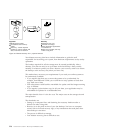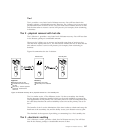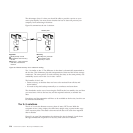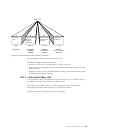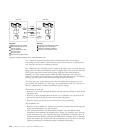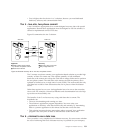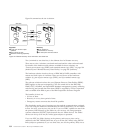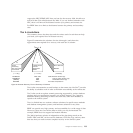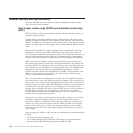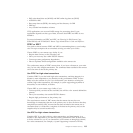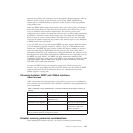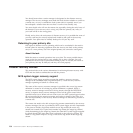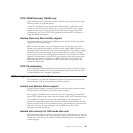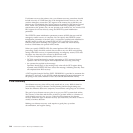
Disaster recovery and high availability
This topic describes the tier 6 solutions for high availability and data currency
when recovering from a disaster.
Peer-to-peer remote copy (PPRC) and extended remote copy
(XRC)
PPRC and XRC are both 3990-6 hardware solutions that provide data currency to
secondary, remote volumes.
Updates made to secondary DASD are kept in time sequence. This ensures that
updates are applied consistently across volumes. PPRC and XRC also ensure that
updates are applied in time sequence across control units as well. This sequencing
offers a very high degree of data integrity across volumes behind different control
units.
Because PPRC and XRC are hardware solutions, they are application, and data,
independent. The data can be DB2, VSAM, IMS, or any other type of data. All
your vital data on DASD can be duplicated off-site. This reduces the complexity of
recovery. These solutions can also make use of redundant array of independent
disks (RAID) DASD to deliver the highest levels of data integrity and availability.
PPRC synchronously shadows updates from the primary to the secondary site.
This ensures that no data is lost between the data committed on the primary and
secondary DASD. The time taken for the synchronous write to the secondary unit
has an impact on your application, increasing response time. This additional time
(required for each write operation) is approximately equivalent to a DASD
fastwrite operation. Because the implementation of PPRC is almost entirely in the
3990-6, you must provide enough capacity for cache and non-volatile storage
(NVS) to ensure optimum performance.
XRC is an asynchronous implementation of remote copy. The application updates
the primary data as usual, and XRC then passes the updates to the secondary site.
The currency of the secondary site lags slightly behind the primary site because of
updates in transit. As part of XRC data management, updates to the secondary site
are performed in the same sequence as at the primary site. This ensures data
integrity across controllers and devices. Because XRC does not wait for updates to
be made at the secondary site, the application’s performance is not directly
affected. XRC uses cache and non-volatile storage, so you must provide enough
capacity to ensure optimum performance.
In the event of a disaster, check the state of all secondary volumes to ensure data
consistency against the shadowed log data sets. This ensures that the same
sequence of updates is maintained on the secondary volumes as on the primary
volumes up to the point of the disaster. Because PPRC and XRC do not require
restores or forward recovery of data, your restart procedures on the secondary
system may be the same as for a short-term outage at the primary site, such as a
power outage.
When running with PPRC or XRC, the data you replicate along with the databases
includes:
v CICS logs and forward recovery logs
v CICS system definition (CSD) data sets, SYSIN data sets, and load libraries
v Recovery control (RECON) and restart data set (RDS) for IMS
234 CICS TS for z/OS 4.1: Recovery and Restart Guide



